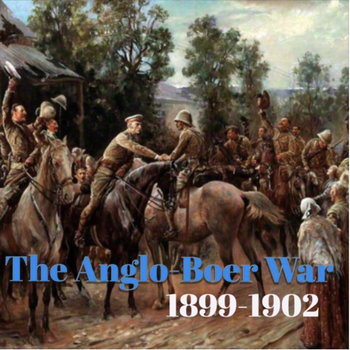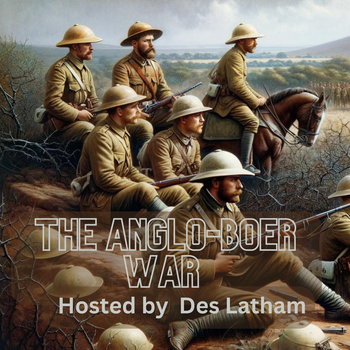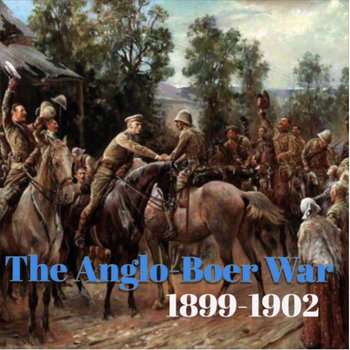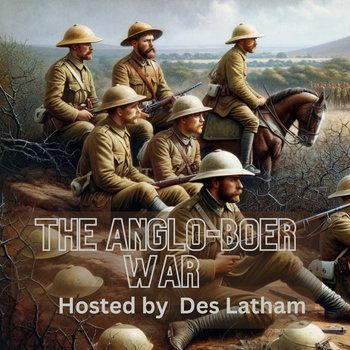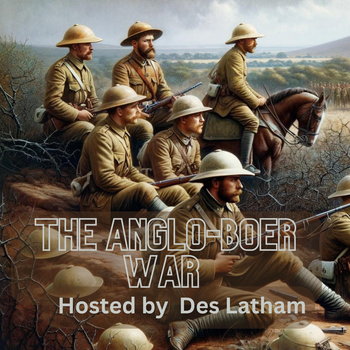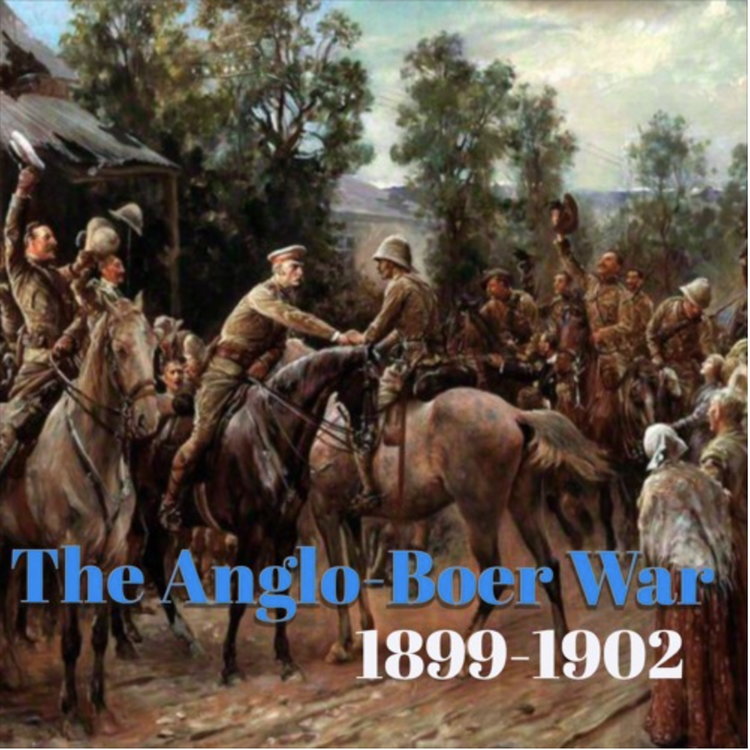
Episode 43 - General Hunter hunts de Wet and Canada loses a famous son
Loading player...
The conventional war has ended and the guerilla war has begun.
The next few episodes will explore the actions of various leaders as they criss-crossed the South African countryside. But its not a romantic gallop, there are moments of unbelievable pain and suffering on all sides. The British soldiers were also to find their battles contradictory - not least being the political to-ing and fro-ing in their homeland while they marched back and forth on the harsh African veld.
There were Australians, Irish, New Zealanders, Canadians too. For the Australians, the veld was a reminder of home in many ways, full of snakes that could kill and heat that sapped and drained. The Canadians were mainly frontiersmen who signed up partly for king and commonwealth, and partly for adventure. They were used to snow and cold, but here in South Africa, the sharp contrast between day and night in winter can cause rocks .. and men .. to crack.
It was now midwinter. We’ll begin this week riding once more with Christiaan de Wet and the Free State commando which had been holed up in the mountains around the Caledon Valley. As we heard last week, Lieutenant General Hunter had arrived in Bethlehem which lies close to the Brandwater range - the Witterberge and the Rooiberge, on the Western arch of the Basutho or modern day Lesotho border.
Further east the barrier of spears or the Drakensberg mountain range - the Dragon Mountains - rise steeply and are covered in snow most of winter. It’s a dangerous place to be caught outside without food, shelter and fire with the igneous rocks worn sharp and high by weather that is as extreme as anywhere.
On the same day that Christiaan de Wet had given Hunter the slip from the Witterberge, Louis Botha had setup an attack on the Canadians who had just received their fresh Argentinian ponies east of Pretoria.
The Canadian Mounted Rifles rejoined their brigade at Rietvlei Pass, northeast of the Transvaal Capital Pretoria, on the 15th July, and by sunrise the next day, they were in a skirmish.
It was during this confrontation that another of the macabre co-incidences of this war took place. One of the Canadian officers who was well liked had just arrived back at the front after recovering from injuries. Lieutenant HL Borden was a tough Canadian soldier - the kind of soldier that the British were to rely on in the next war - the Great war of 1914-1918.
He and another Lieutenant by the name of Birch wanted to get a better view of where the Boers were on the Tigerpoort ridge - so both stood up to see where the Mauser fire was coming from.
Borden was the only son of Canada’s Minister of militia - or the army in common language. What happened next would resonate around the North American territory.
The next few episodes will explore the actions of various leaders as they criss-crossed the South African countryside. But its not a romantic gallop, there are moments of unbelievable pain and suffering on all sides. The British soldiers were also to find their battles contradictory - not least being the political to-ing and fro-ing in their homeland while they marched back and forth on the harsh African veld.
There were Australians, Irish, New Zealanders, Canadians too. For the Australians, the veld was a reminder of home in many ways, full of snakes that could kill and heat that sapped and drained. The Canadians were mainly frontiersmen who signed up partly for king and commonwealth, and partly for adventure. They were used to snow and cold, but here in South Africa, the sharp contrast between day and night in winter can cause rocks .. and men .. to crack.
It was now midwinter. We’ll begin this week riding once more with Christiaan de Wet and the Free State commando which had been holed up in the mountains around the Caledon Valley. As we heard last week, Lieutenant General Hunter had arrived in Bethlehem which lies close to the Brandwater range - the Witterberge and the Rooiberge, on the Western arch of the Basutho or modern day Lesotho border.
Further east the barrier of spears or the Drakensberg mountain range - the Dragon Mountains - rise steeply and are covered in snow most of winter. It’s a dangerous place to be caught outside without food, shelter and fire with the igneous rocks worn sharp and high by weather that is as extreme as anywhere.
On the same day that Christiaan de Wet had given Hunter the slip from the Witterberge, Louis Botha had setup an attack on the Canadians who had just received their fresh Argentinian ponies east of Pretoria.
The Canadian Mounted Rifles rejoined their brigade at Rietvlei Pass, northeast of the Transvaal Capital Pretoria, on the 15th July, and by sunrise the next day, they were in a skirmish.
It was during this confrontation that another of the macabre co-incidences of this war took place. One of the Canadian officers who was well liked had just arrived back at the front after recovering from injuries. Lieutenant HL Borden was a tough Canadian soldier - the kind of soldier that the British were to rely on in the next war - the Great war of 1914-1918.
He and another Lieutenant by the name of Birch wanted to get a better view of where the Boers were on the Tigerpoort ridge - so both stood up to see where the Mauser fire was coming from.
Borden was the only son of Canada’s Minister of militia - or the army in common language. What happened next would resonate around the North American territory.

